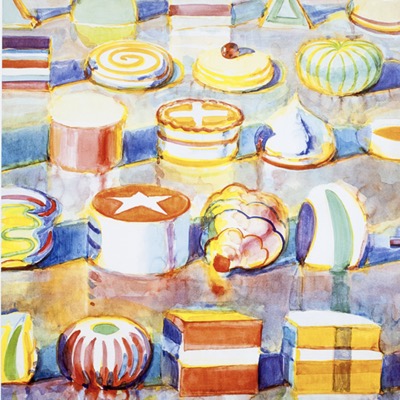Although influenced by it, Thiebaud Wayne, a trained commercial artist, was uninterested in the history surrounding
abstract expressionism. His main concentration was on ordinary objects, thus getting associated with the
Pop Art movement, which he brushed away and stated he was an old-fashioned painter. Active in theatre design works, he created sculptures and public murals.
« I haven't the slightest idea what art is, but to be a painter is something
of which you have to prove. »
Wayne Thiebaud
Thiebaud Wayne’s paintings exemplified object transference notably in his cake paintings; the frosting was so thickly applied that it mimicked the element it portrayed. As a hardcore traditionalist, he used pastel, charcoal, and oil paint as his materials
Read More
Although influenced by it, Thiebaud Wayne, a trained commercial artist, was uninterested in the history surrounding
abstract expressionism. His main concentration was on ordinary objects, thus getting associated with the
Pop Art movement, which he brushed away and stated he was an old-fashioned painter. Active in theatre design works, he created sculptures and public murals.
« I haven't the slightest idea what art is, but to be a painter is something
of which you have to prove. »
Wayne Thiebaud
Thiebaud Wayne’s paintings exemplified object transference notably in his cake paintings; the frosting was so thickly applied that it mimicked the element it portrayed. As a hardcore traditionalist, he used pastel, charcoal, and oil paint as his materials. He used exaggerated colors, thicker impasto, expressive brush strokes, and heavy pigments to illustrate his subjects. He had no specific medium of making prints; therefore, he used nearly all the mediums, including
silkscreen,
lithography,
etching, and
linocut.
Thiebaud Wayne received several honors for his work, and a 2001 retrospective of his work won an enthusiastic commendation in New York.
Read Less
































